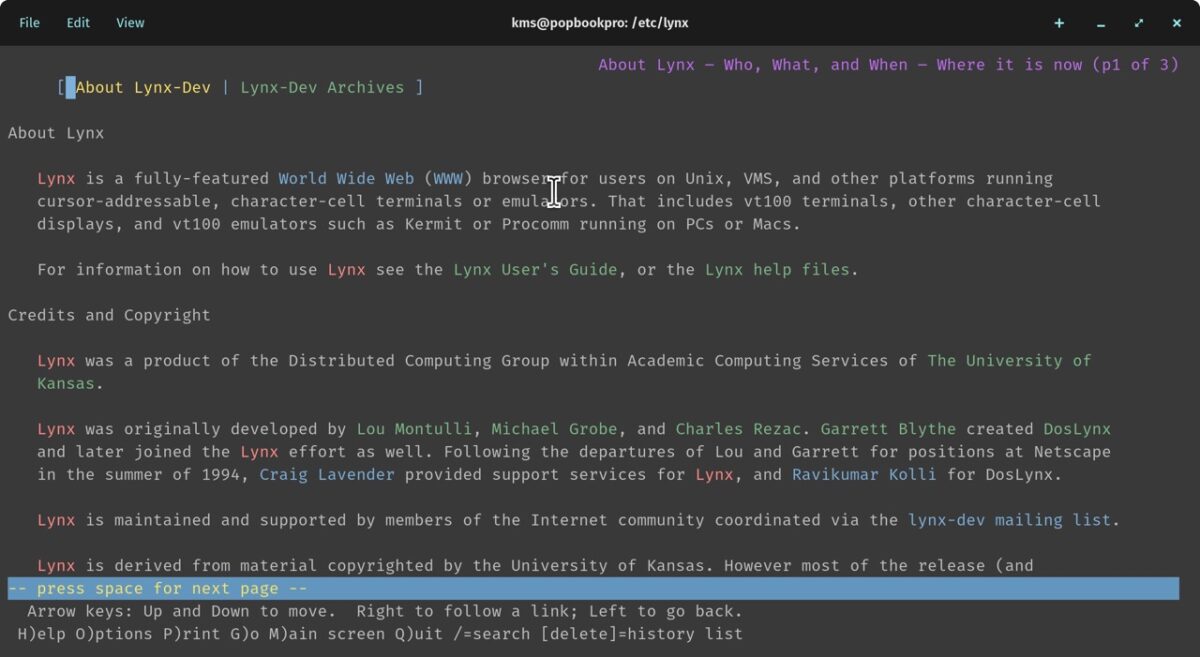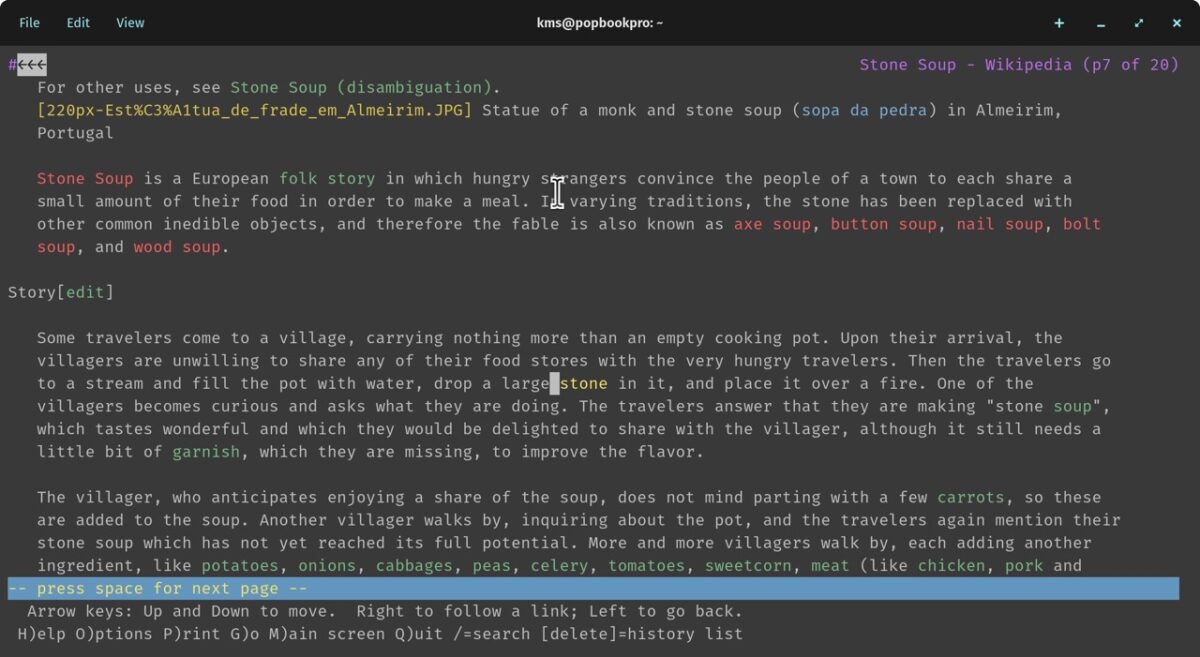Lynx: Surfing the Web Like it’s 1992

Lynx is a terminal based browser. Created in 1992, it is the oldest web browser still maintained (as of 2024).
If I had to describe the experience of the modern web in one word, it would be: exhausting.
Google searches yield almost a half-page of sponsored ad content based on one’s search prompts. The search results that aren’t sponsored ads are, by and large, SEO spam.
And if you actually find real content, you’ll have to wade through a minefield of popover ads, mailing list pitches, blinking ad banners and other distractive nonsense to actually get to what you are looking for.
And the mechanism by which we perform and retrieve our searches has degraded as well. Modern web browsers boast a bevy of new features, but they are almost always at the expense of a performance penalty. Most modern browsers feel downright sluggish and unresponsive, even on modern computing iron.
We can’t really get rid of a web browser, but we can control the experience with a little effort. That’s where Lynx comes in: it’s a terminal based web browser that runs wicked fast. It can achieve blazing speeds because it only returns text. It does not render CSS. Nor does it use Javascript.
Lynx is an open source text-based web browser. It is also the oldest web browser still being maintained. You can install it on nearly all operating systems. (I use Lynx on my Mac and Linux machines daily.)
Once installed, you can type:
lynx duckduckgo.com
and DuckDuckGo will load up. Given that Lynx only renders text, things will look a bit spartan. Use the Tab key to move your cursor to the search field, and begin typing your search query.
Hit the Tab key once more and hit Enter, and your search results will appear almost instantaneously. To go back, hit the left arrow. To perform a new search hit the “G” key. That’s really all you need to know to get started using Lynx.
I use Lynx because it lets me quickly find and process information in a focused manner. There are no banner ads. There are no auto-playing movies. It’s quite refreshing, if I’m being honest.
Lynx has many practical uses, chief among them accessibility. Lynx is used by visually impaired users and is compatible with text-to-speech software.
Lynx consumes very little in the way of CPU and memory, making it the ideal choice if you want to quickly browse the web on an older computer. I use it quite a lot on my 2014 MacBook Pro (running pop!_OS).
Lynx is not for everyone. It’s for intermediate and power users who aren’t afraid to use the Terminal. You can’t really use Lynx with social media sites (hey, another bonus!) or sites that rely heavily on graphical content. Those are the down-sides.
But if it’s textual content that you’re after, Lynx can offer you a calm, sane method for conducting your web searches.
And if you want to search the web via the Terminal, but want your search results to load in your graphical web browser, I recommend checking out ddgr.
-Krishna





No comments yet. Be the first!